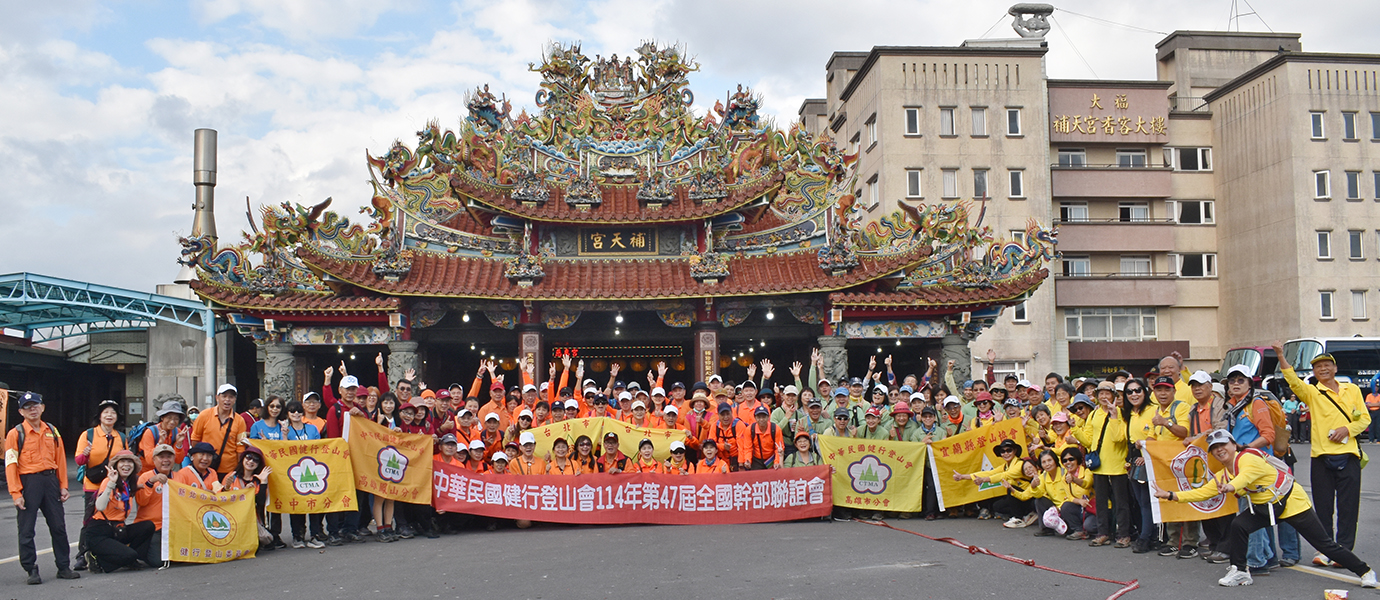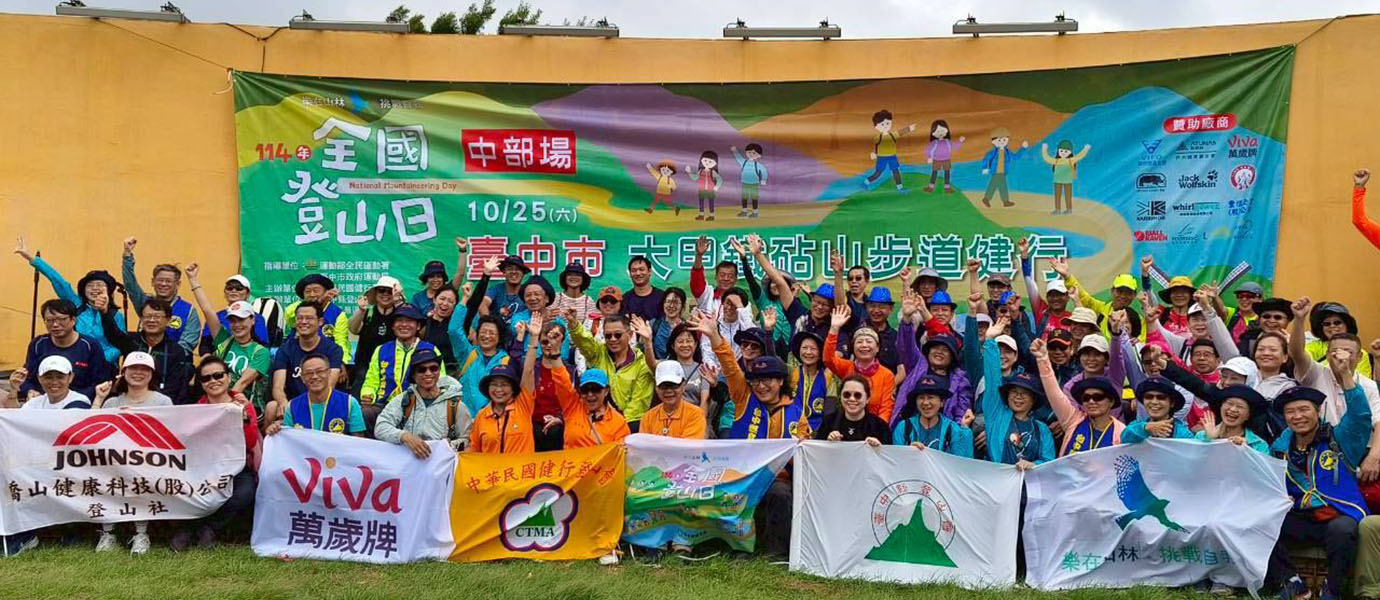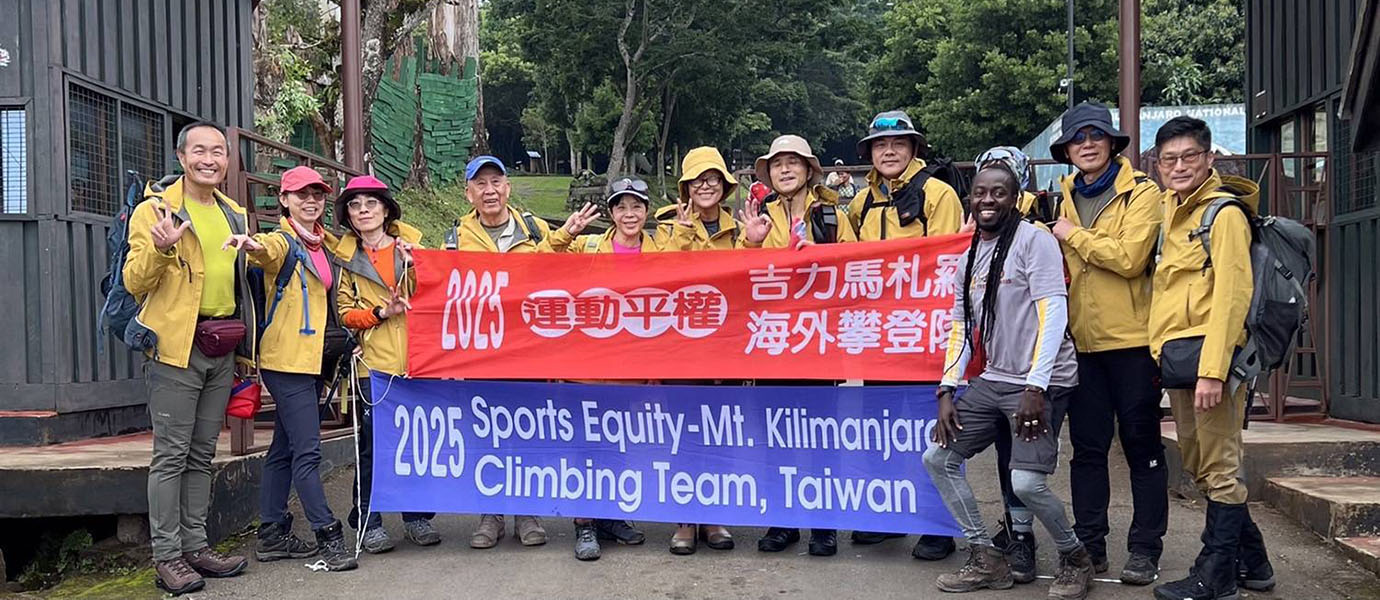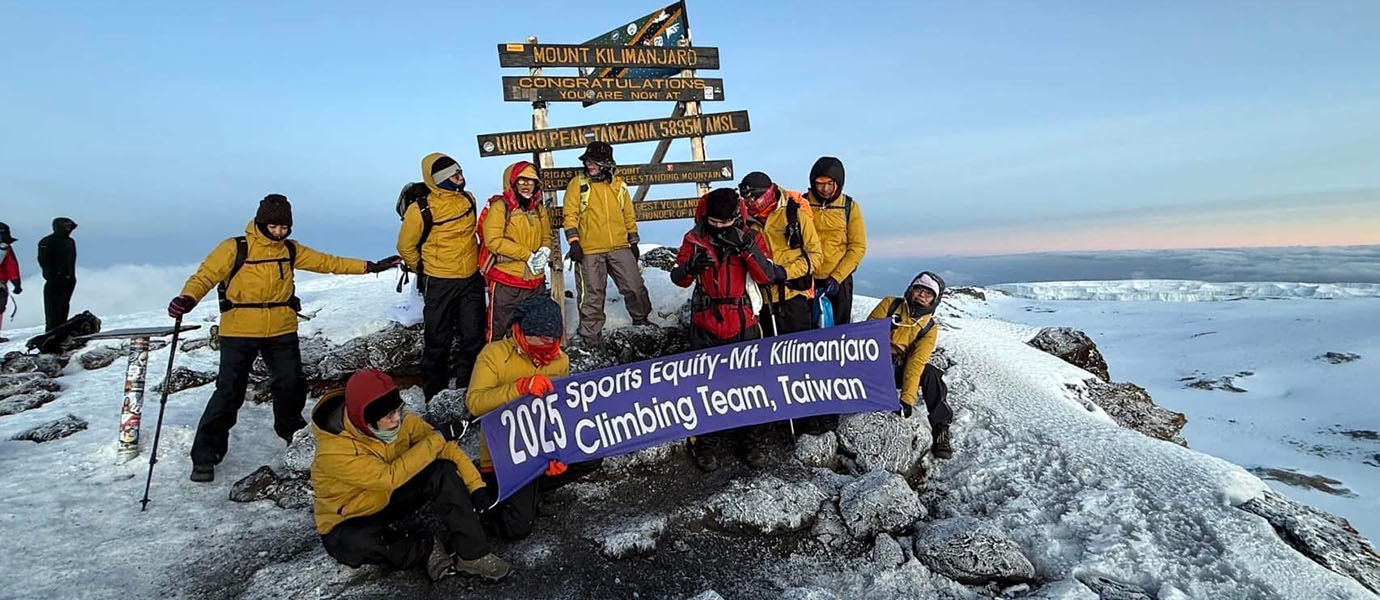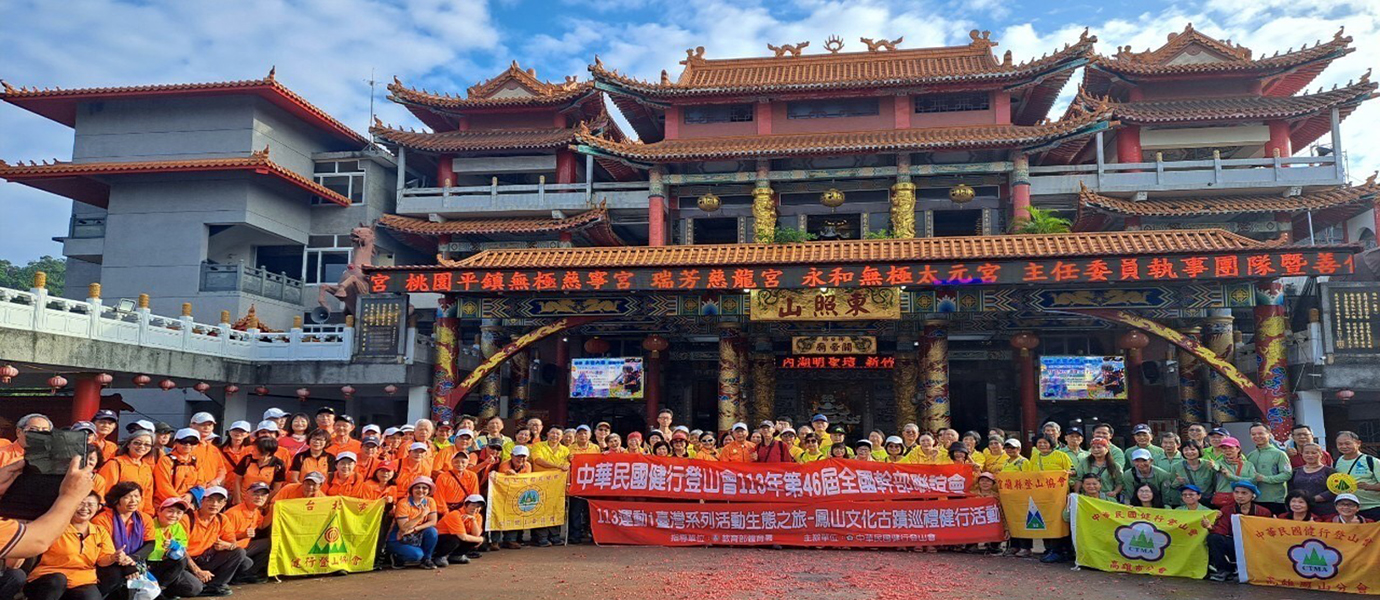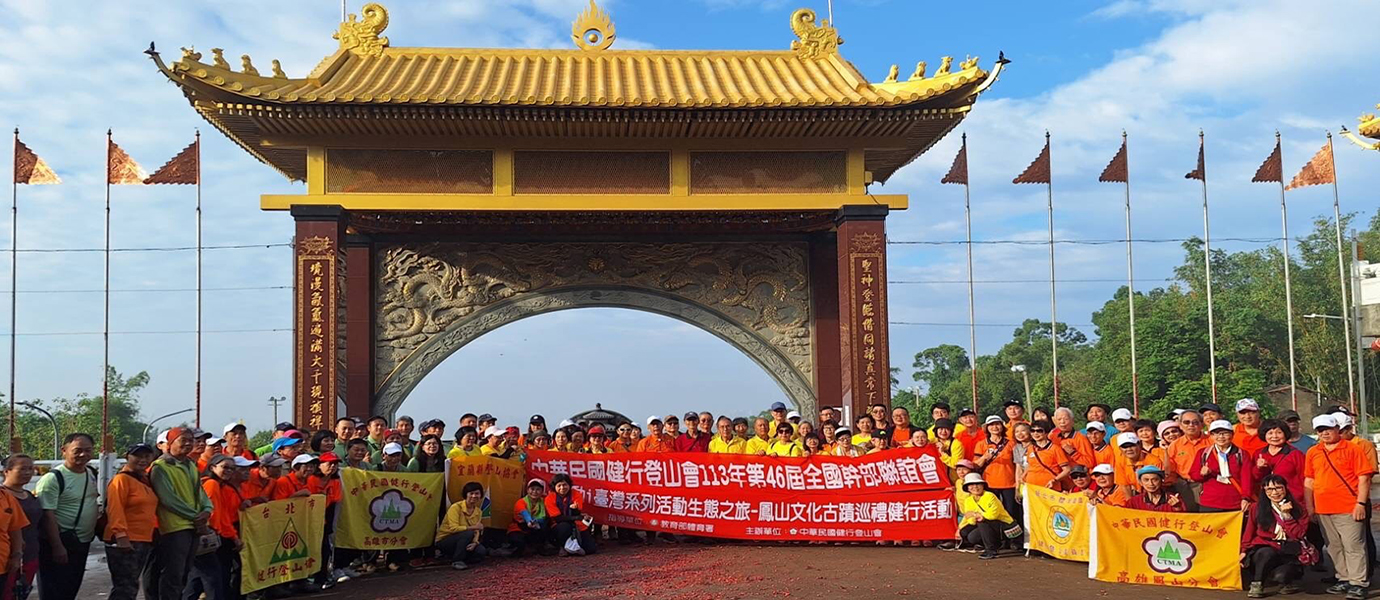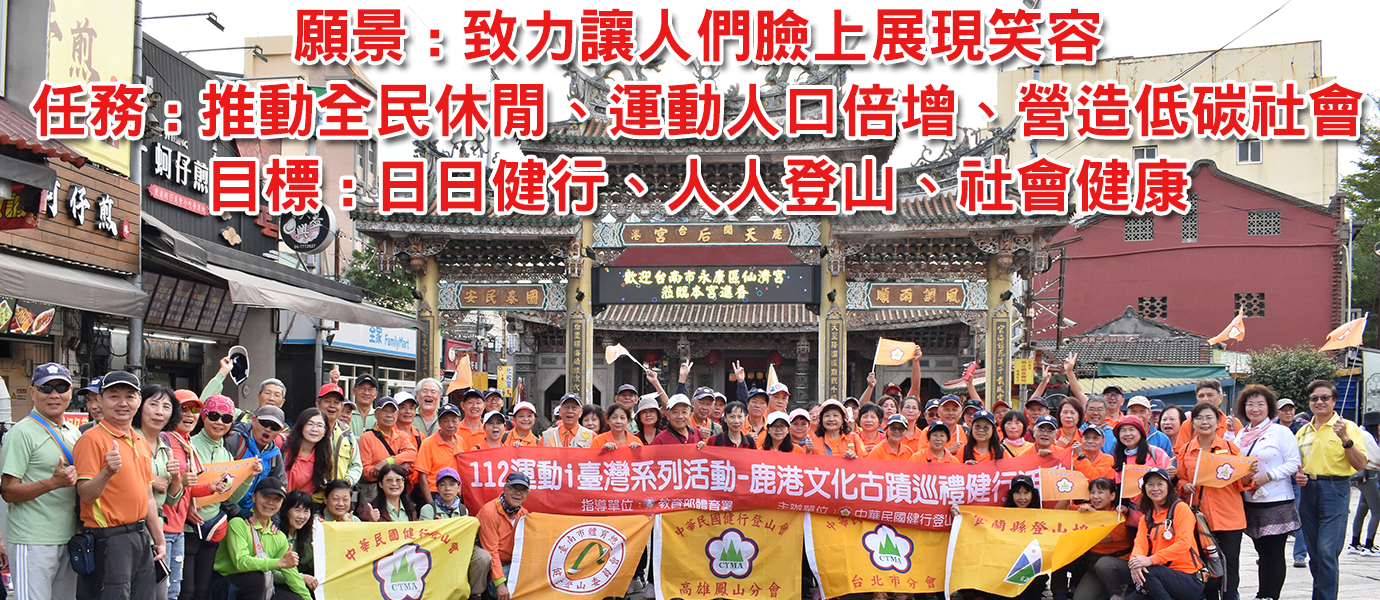在變遷的世界中 運動的新思維
「奧運發源於二十世紀,
而我們將在二十一世紀看到全民運動的興起」
「奧運發源於二十世紀,而我們將在二十一世紀看到全民運動的興起」。這是2002年6月10日在台北由「國際體適能全民運動總會」(TAFISA) 德國籍主席 Prof. Dr. Jürgen Palm 在這場演說中對二十一世紀推展全民運動的展望。
以下是演說內容重點的節錄,其立意可供我國推展全民運動之參考:
一、 現代運動如同十九世紀的世界展覽會(World Exhibitions),都是傳遞全球化的表徵,這種概念和組織,因為有奧運(Olympic Games)的助長,以一種前所未有的速度普及世界上大多數的國家。現代運動是全世界第一項具有相同外貌、原則、規則、術語和方式的文化形式。
二、「全民運動」計畫,讓每個人對運動的認知不再侷限於競技活動的觀念,而這種觀念適用於所有年青人和老年人以及各種經濟條件的人。運動的體系也反應出現代生活條件的改變,它代表一種理想的完美境界。
三、 為了持續努力推廣全民運動的決心,也為全民運動的推展提供良好的機會,有六項值得探討的問題:
(一)二十一世紀現代科技的發達,使人類脫離了傳統以「全民工作」的社會。轉變為就業機會減少,空閒時間卻增加了,這種現象使社會學家預測將來會變成一個30﹪的時間工作,70﹪的時間不工作的社會形態,不工作也必須將時間花在值得從事的活動上,保持各人身份地位的認同。
(二)傳統社會是一個年青人主宰的社會,但二十一世紀卻已進入高齡化的社會,由於醫療及營養的改善,使人類的壽命延長,世界衛生組織(World Health Organization)已發現在工業國家和後工業國家中,即使在所謂的開發中國家,百歲人瑞已有五萬人以上,無疑地,老年人注意保持身體的健康、運動的型態和習慣,才能讓數百萬的老年人變得更有活力,疾病的發生率和醫療的必要性就更可降低,政府財務的負擔就可大為減輕。
(三)全球醫療費用的急速增加,德國去年花了五千五百億馬克來對抗疾病,這是國民全年生產毛額(GNP)中,有六分之一都用來支付醫療費用,世界上國民健康狀況較良好的國家,包括美國亦復如是,因此目前政府最大的財務來源,就是避免產生人類行為所導致的疾病,如肥胖、高血壓、高膽固醇、愛滋病…..等,唯有靠運動來改變。根據估計,以德國為例,減少三分之一的醫療費用支出,國家每年可節省一千六百億馬克的經費,這些錢可用來建學校、公園、文化中心….等。
(四)運動能夠讓人們透過遊戲規則來降低傷害和暴力,尤其對精力充沛的青少年,必須讓他們學習以規則而非暴力來解決問題,例如監獄中的運動計畫,也有某些正面的助益。
(五)資訊工業的發達,網際網路的普及是虛擬實境角色的增加,而運動必須被視為和虛擬實境相對的角色,這是有史以來,第一次能夠不靠身體的接觸而生活得如此接近的時代,但人體的活動力,很有可能在日常的生活中消失,因為任何有空間、速度、重量和移動的活動,都必須靠實際的神經系統來進行心理和情感上的了解、評估和享受,而虛擬實境是沒有神經系統的,使得人們逐漸摒棄習俗、創造力和人類的差異性。面對面式的互動消失了,而這種消失對社交生活甚至道德觀所造成的影響,不得不讓人擔憂,因為我們將喪失從父母、同儕、老師、團體或教練身上才能學會的對與錯,運動能彌補這些缺陷。
(六)人類需要團體間人與人的互動,而這種互動已存在很長一段時日,除了家人、親朋好友、同好、同事和競爭對手等,都是個人和這個抽象的大社會必要的媒介,運動中人與人的互動是珍貴的文化寶藏,它在新的千禧年將扮演極重要的角色,運動也在平衡全球化和地區性社區生活佔有極重要的地位。
由以上的演說內容,我們可以體會到推展全民動的利機和重要性,事實上國內體育領導者已相當重視全民運動的推廣,各種運動有其共通性,「健行」是各種運動的基礎運動,走路是人類與生俱來的本能,科技文明的進步,減少了人類走路的時間。因健行活動沒有空間和時間的限制,祇要多走路多爬樓梯,就可達到健行的目的,健康有力的雙腳是各種運動的基礎條件,推展全民運動應該從養成「健行」這項基礎運動的習慣去推展,有健康的國民,才有健康的社會和國家,推展全民運動應是二十一世紀全球人類共同努力的目標。
我國近年來戶外休閒運動風氣雖已打開,如健行、登山、太極拳、木球、晨泳、慢跑、元極舞…等,但普及率還嫌偏低,這是國人比較保守的綠故與長期以來對運動的熱誠不足,更由於多年來國內教育,以偏重於追求靜態的知識,不能落實推動基礎運動,造成國民體適能明顯衰退,肥胖人口增加,各級學校學生以升學主義為目標,社會一片追求近利,部份青少年生活糜爛,與沈迷靜態的網路、好逸惡勞,無法吃苦與戶外運動完全脫節,誤認運動與勞動為一體,視運動為畏途,體力衰退,扺抗力不足,依據健保局最近報告,虧損程度益逐嚴重,國民健康因而亮起紅燈,青少年運動人口逐漸減少,中老年人無法養成運動習慣,將造成我國高齡化社會來臨的隱憂,際此「國際體適能全民運動總會」(TAFISA) 德國籍主席 Prof. Dr. Jürgen Palm來台演講提倡全民運動之同時,我們應該呼籲大家一起來思考,探討在21世紀尹始我們如何來推廣全民運動,並由本身做起,大家一起來配合行政院體育委員會推展「運動人口倍增計畫」
「健行」是各類運動的基礎運動,是隨時隨地都可從事的運動,活潑有力的雙腳,可促進全身血液循環,帶動身體的新陳代謝,身體一定健康,今年的世界足球大賽,我們發覺勝的隊伍,除精悍的技術外,充沛的體力也是致勝的關健所在,強國必先強民,我們應該朝向推廣全民運動,在本世紀初期奠定我國國民運動的基礎,進而與全世界體適能各項運動相結合。
Changing Sport in a Changing World
Prof. Dr. Dr. Jürgen Palm
President of TAFISA
Modern sport was – together with the World Exhibitions of the outgoing 19th century – one of the first carriers of globalization. Its concept, organisation, reached the majority of countries in a thus far unknown fast process, accelerated by the Olympic Games.
Modern sport was the first culture form that had the same appearance, principles, rules, terms, fashion around the world – long before global entertainment, tourism, information technologies.
Here for the first time ever the world was conceived as one.
Half a century later a new wave in the development of modern sport began to shape up. From the second half of the 20th century the sport development grew further into an additional and also globally extending branch. Under the name “Sport for All” programs developed which intended to give everybody access to sport independent of competitive performance: from the very young to the very old and under all economic conditions. The sport systems thus responded to the changes of contemporary life conditions. Worldwide sport grew into new dimension of participation: more than one billion participants are estimated in sport today.
This Second Wave in the globalization of sport gives it an extraordinary importance in today’s politics, health, culture, community, economy development.
The three words SPORT FOR ALL stand for an utopia. Utopia are synonyms of hopes not of realities. But they may develop a dynamic drive in themselves if they are nourished by human hope and historical factors. If a central human truth on one hand and the power of social demands on the other hand are coming together, than an utopia may have a chance of at least a partial realization: in our case the growing participation of all kind of people, under all kinds of circumstances and in all kinds of activities understood and shaped as Sport for All...from five percent of the population to twenty, to thirty to fifty and seventy, who knows. We will never reach the one hundred. And we will have to start again with every generation. But we will constantly be working on it.
There are challenges ahead of us that harden the work and at the same time improve the chances of Sport for All. I count six of them.
The first challenge of Sport for All we have to look at in the new millenium is an internationally observed change in the labour market. There is no more sufficient economically requested and provided employment for everybody. We stand at the end of thousands of years when work was dominating human life. Modern technology and economical provisioning of production and distribution does no more need the involvement of everybody beyond school age and before retirement years in employment. So we look at :Shrinking employment connected with growing unwanted free time.
The distribution of work and leisure in traditional societies was an undoubted and often unloved fact. There was more work to do in farms and factories, in offices and markets than there were the necessary hands and brains to deliver it. There was„ work for all“, there was work from childhood to late years.
Today we observe a new constellation. The shrinking of work does not automatically fulfill an old dream of humankind: to be freed from unwanted physical slavery and enter the age of selfdetermined leisure.
On the contrary. That there is not enough work for all is considered by those who are unemployed as a loss of personal status and chances. Technical and economical reasons for shrinking work can be named in developed and undseveloped societies.The reduction of work hours from 1880 to 2000 is remarkable: whereas our greatgrandfathers worked 60 hours a week our generation may have just 38 hours between Monday and Friday – and more and more are not employed at all. Let us look at the resulting forms of free time: workfree hours, obligationfree hours, unemployment, there is education time from childhood to young adulthood, there is a more and more prolonged retirement age „troisieme age“. Sociologists look at this phenomenom and give us for the near future the prediction of a 3o/ 70 society: thirty percent are working and seventy percent are not working.
But as the human being obviously cannot exist with mere unactivity, the unemploed times in life need to be spent with forms of activities which the individual considers worthwhile and socially not downgrading but status confirming.
Could and should sport not be considered as one meaningful solution?
The second challenge is the expanding lifespan – we move from a traditionally youth dominated to a senior citizen society.
The growing life expectancy in the industrial and postindustrial countries is astonishing – but as the World Health Organisation observes this applies to a remarkable extent also in the so called developing nations.
Japan, Finland, USA report life expectancies alsready close to an average eighty years. There are already 50 000 persons of a hundred years and more in the United States. We know some major reasons: it is the improved health care, it is better nutrition, it is ongoing physical activity in later years and it is involvement in social life.
The trainability of the aging body – which was denied beyond sixty when I was a student - is much higher than believed just 40 years ago. Research has proved that muscular strength and aerobic capacities can be trained into the eighties and nineties of the human lifespan and flexibility and coordination can be preserved to quite some extent by respective habits. It is based on largescale research that we can say today: 2/3 of age unwellness is avoidable by physical activity. It is no more a minority that will be able to enjoy these biologically and socially provided privileges.
The statistical relationship between young and old is shifting to the opposite: in the future the majority of the living persons will be older than forty years – and in a generation from now about every third woman or man in Sweden, Canada, Germany etc. may be 6o years or more.
This restructuring in the composition of the setup of the inhabitants will have an enormous impact on economy, social relationships, culture. The older generation will not only be more visible on the streets, they will also be important consumers, voters, attendants of leisure, culture, education programs. And they will play an important part in the social systems. Whether there is a balance in the upbringing of the retirement money by the younger generation for their old peers will be a source of limiting conflicts and allow respective lawmaking.
No doubt: as much as it is possible to minimize illness and care necessities through a long lasting physical wellness in later years as much will we minimize the financial burden on the working younger population.
To which extent and in which forms is sport requested to turn the late years of millions of people into active and more enjoyable years?
A third burden comes up now which requests sport for an adaptation of it`s role in society: this is the worldwide observed acceleration of health costs.
It was shocking to read earlier this year in the official health report of the Federal Republic of Germany how much this country is spending on health. But I have to correct my sentence, because „spending for health“ is the wrong wording. The vast majority of the costs goes not for health but goes against illness. And that is a completely different matter. The money that Germany spends against illness resulted in 550 billion German marks in the last year. An incredible sum! It means that every sixth mark of the gross national product has to be spent more or less for the repair of human bodies. Similar conditions we find in the United States and probably in general in the wealthier countries of the world. But the principle that an enormous amount of financial resources is spent on illness care is true as well for the develloping countries.
Is this our destiny or is it a grand misplanning, is it fatum or is it possible to change this?
To answer this question we must look at the kind of illnesses that dominate the scene in doctors practices. It is no more the contagious diseases like in thousands of years before – and of which we have in Aids a contemporary remnant after many of the former ones have been wiped out or have been reduced. No, these are to a remarkably high extent illnesses that result from behavior. We eat too fat and too sweet, we drink too much alcohol, we allow too much stress, we smoke. And we are sitting too much. Humans that for a hundred thousand years were hunters, gatherers, farmers, workers, walkers have turned in what the Americans call „couch potatoes“, overweight sedentarians, with high blodpressure, high cholesterol and a much too low physical activity level.
It has been estimated that at least a third of the national health costs could be avoided by some behavior changes. For my home country that would mean that we would every year be richer by 160 billion Deutschmarks. We would be able to build all the schools, parks, culture centers and employ all the necessary personell to make life more enjoyable. And what is true for this country is in principle true for all nations. Our biggest financial resource is the avoidance of habit caused illnesses. Active health can be seen as the biggest moneysaver of our time.
So lets be active, stop smoking, reduce drinking, eat less fat, less sugar and avoid stress.
But let us be realistic: fat makes meals taste better, alcohol stimulates fun, sweets can sweeten dull days, cigarettes are considered a temporary relief from stress. At least it is so as people see it. All good proposals for a healthier life remain educational intentions with little effect as long as the new lifestyle is not in itself tasty, joyful, rewarding plus healthy.
The third challenge of sport in the new millenium: to lower the burden of illness expenditure.
But sport not only as a provider oof healthy muscular and aerobic activity- as a kind of workout for a rational purpose- but sport as a provider of play, social interaction, physical selfconfirmation, adventure, instantaneous wellfeeling. A sport tailored to the choice and capacity of the individual.
In our excursion to social territories in which sport so far is not fully established but demanded we come now to the most difficult and the most human challenge: can involvement in sports prevent humans from violence?
The dark periods in history, the wars, the fights, the suppression, the occupations, overshadow the periods of peace. What is true in the grand scale of nations is true on the smaller scale of communities. What kind of a world is there around us, where schoolchildren in the morning before entering their classes have to pass through a metal detector like in airports – in order to find out whether teenagers bring guns and daggers to school.
What kind of a world is there around us, where skinheads hunt coloured foreigners through town and brutally beat or even kill them. What kind of a world is there around us in which kids in the gang of one quarter could not enter the neighboring quarter in fear of being killed. And what kind of a world is reproduced in the heads of the young when a youngster in the land of unlimited possibilities views 10 000 murders in television before she or he becomes eighteen years old.
Close to the new Millenium we stand with hopes for peace and reconciliation but with a bad record of wars and violence till the last days of December 1999: in our ears still the detonations of Kosovo and now the bombings of Chechnia, before our eyes the newspapers with the death toll of Afghanistan and Ruanda and on the tv and movie screen a flood of brutality.
Violence produced by criminal disposition may not be considered a major challenge for sport although I would not exclude that task totally as examples of sport programs in prisons had some positive results. No, the challenge of sport may be it`s role for groups of populations that are socialized into violence by the forces of ignorance and illiteracy, ethnic conflicts and wide economical disadvantages.
The fourth challenge of the new millenium: could not sport in the context of applying human rights, educational chances and economical access indeed play a role of accepting the other player, wrestler, climber, boxer, fencer, runner as a person more similar than different - and accept that in competition like in life rules and respect have to beapplied?
Sport seems to offer chances to reduce harm and violence through play. So in a model case of using empty building lots as basketball areas in Harlem, New York, the rate of violence and accidents in the respective neighborhood went considerably down. Out of the motivation to get youngsters at night away from the street in several German cities midnight baketball has been offered and the social workers there are satisfied with the socialization chance to play against each other instead of fighting each other. It was the occurence of riots in Los Angeles in 1986 that lead to the initiative of Arnold Schwarzenegger and others to create the „Innercity Games“ and attract the youngsters to sports and competitions that otherwise might be easier prey for gangs and criminality.
In a city that became infamous for drugdealing, Medellin in Colombia, an especially interesting model to deal with dangerous social networks of youngsters in gang controlled neighborhoods. Jürgen Griesbeck, a German married to a Colombian lady introduced „Futebol por la Paz“. Here street teams of eight play against each other, in which at least two girls must be integrated and in which –remarkably- the first goal must be achieved by a girl. In the 200 teams playing there are many youngsters who meet their counterperts peacefully in the game who might be shot dead if they would dare to walk into another gang`s territory.
The example of Futebol por la Paz is so convincing that the Vice President of the German National Parliament has created a foundation to bring this model to Brandenburg, an Eastern state of Germany where the crime rate is high and where there are many villages without recreation opportunities for teenagers.
We all have seen the kids, who are not older than 12 to 14 years and who in the Central African wars have been socialized into children soldiers, youngsters who were taught to kill. In their reeducation sport must play a major part if they ever learn to be part of a society in which conflicts are solved by rules and not by guns.
Let me stay for a moment longer with this theme and with a city in which the contrasts of contemporary life are representative for the contradictory situation of humankind today. It is a city of alpine beauty, of rich vegetation, historical landmarks and a remarkable development of business and industry. But it is also a city in which foreigners are warned not to walk in certain quarters and where daily robbing and stealing is happening in daylight on the streets. The word is about Bogota, Colombia`s fascinating capital. Every Sunday here the Ciclovia program of 120 km of traffic free ring streets attracts 2 million (!) walkers, bikers, runners, skaters etc. Here the course of Ciclovia goes from rich to poor quarters. Neighborhoods mix conflictfree. No incidents of crime! It is in the framework of this world class model of citizen activity with Sport for All that one can understand the decidedness of the mayor of Bogota to build in the next three years 2000 neighborhood sport facilities to improve the life quality – a factor for sure in dealing with delinquency, too.
The fifth challenge of sport in the new millenium we have to look at it as a counterfactor to the increasing role of virtual reality.
I have written this paper with my computer. With the same machine I can buy books via the internet, reserve the flight to Larnaca, inform myself on the temperature this day in Cyprus can communicate per email with my brother-in-law in Texas without going to the letterbox.The world with many of it`s offers and requests is just 20 centimeters in front of me – it takes some mouseclicks and I arrive in the library of the University of Melbourne.
For the first time in history it is possible to live nearly without physical activity. When my grandfather still needed his strength and stamina for his 40 minute walk to work, for his physical involvement as a blacksmith but also for communicating with distant living family members and for entertainment in the Saturday night dance, I could live without all of that on the electronic highways on the desk, in the tv set, the mobile phone, the cd-player.
We have the first generation where children learn to switch on a Sony or a games computer before they play hide and seek – if they play hide and seek any more at all.
So it could be possible that the activity of the human body disappears out of daily life.
The electronic industry is already developing machines which allow you to simulate the greatest sport acts yourself without moving more than the small finger. In a respective suit, with special gloves and an astronaut type helmet you may in the future pedal yourself in the Tour de France, play against Andre Agassi or his love, Steffi Graf, climb the Mount Everest or race the skis downhill. Weibel, a German philosopher of esthetics and a propagator of virtual reality, sees in these developments a chance of depart form the „prison of the human body“. This by the way is a hyper-ideology with which I cannot agree. The experience of any space-,speed-,weight- and locomotion-related act is bound to a program in the nervous system which is installed in real and not in virtual reality to be mentally and emotionally understood, evaluated and enjoyed. The youngsters who spend not only hours in front of their computer but also hours on their skateboards know that.
However the competition between acts in reality and those in imagination has grown to enormous dimensions. Information and entertainment are coming more and more out of electricity driven boxes and not out of face-t-face and body-to-body acts.
But for which price?
What are we going to loose when we win a life more and more artificial? Which are the physiological, the psychological and social consequences when the body and it`s functions are disregarded to such an extent?
And today? Many of these forms have already disappeared and many others are disregarded as they are no more seen as connected with the contemporary mainstream of lifestyles.
We observe a globalized music culture. We experience that fashion is globalized. The Hollywood dominated film industry is one of the big globalizers. Under the pressure of the major languages many idiomas are in danger to be extinct in the next few decenniums.
Modern sport itself is an example of globalisation – and the Olympic Games may be the first world wide distributed global culture: nearly a quarter century before the film industry and a century before the internet.
No doubt this process of globalisation holds enormous advantages in productivity, information, economic prices, access to former privileges etc. But we also have to watch the influence on discarding mores and creations and human diversity .
In our context we can and must complain about the effect of the disappearance of face-to-face interaction and it`s influence on social life and even on ethics. One may well learn instructions on how to operate tools and electronic machinery from a CD ROME but what is good and what is bad cannot be learned from a monitor. It needs a social context of parents or peers or teachers or teams or trainers to learn from what is right and wrong!
The sixth challenge I want to mention is the role of sport in the balance of globalization and local community life.
I believe that the human being has an existencial demand of interpersonal acts in groups which exist over a certain time. Beside family the neighborhood, hobby groups, colleagues at work, sport teams, clubs , competitors in a match etc. are necessary mediators between the individual and the abstract big society.
How to realize the existence and the effects of active communities in the daily life of today? Here I think the enormous cultural thesaurus of interpersonal acts in sports receives a new importance in the new millenium.
And also the tradional games and sports – which so impressively show their cultural wealth in the World Festivals of TAFISA – have a new chance of survival and of contributing to the quality of life in the home region and abroad.
With the chain of challenges from the disappearance of enough work, the prolongation of life, the acceleration of health costs, the economical and ethnic disparities, the growth of virtual reality and the impact of globalisation we have confronted sport with a distinctively different world than the one that sport grew up in when this century began. In the new Millenium Sport must adapt to new challenges but also to new chances.
Could sport be a medium to respond to these challenges? And if yes: in which forms?
At which price? With which consequences for doctors, educators, streetworkers, publishers,architects, urbanists, journalists, environmentalists, event managers? With which consequences for universities, companies, communities, clubs, federations,hospitals, shops, hotels, recreation centers, parks, school grounds, assembly lines, ministries etc. ? With which demands on politics, budgets, hierarchies, workplaces, laws, health services, school currucula, academic program?
I leave the questions to all of us.
The costs of such a rearrangement are considerable – both in money and in the redistribution of power. But the material and immaterial gain from such a new placement of sport could by far outweigh the necessary investments. In such a future sportoriented society the towns would have more sport- and more playgrounds, traffic free streets, a network of bicycle paths and so on. Physical education would again be a major and daily schoolprogram, the active intermission would be introduced in all factories and offices, doctors would earn their living at least half from keeping healthy and not only from medicating what is already sick. 3o minutes of daily physical activity and sport would be as normal as 3o minutes activity in the internet. Living in paradise ? No, but living in more quality of life, yes.
Such a rearrangement of sport in contemporary society can only be envisioned when we understand the new challenges and chances that sport could meet in the future.
How are the chances for the realization of this truly humanistic concept?
The 20th century was the first saeculum of Olympic sport, the 21st century will see the rise of Sport for All. Coubertin`s brilliant idea of creating an elite for lifting the level of the general population by acting as models for us average humans will have to be complemented by a redirected focus not only unto the elite but unto humankind as a whole.
The tasks are there. The solutions have to be found. The work may last long. But isn`t it worth every effort?

